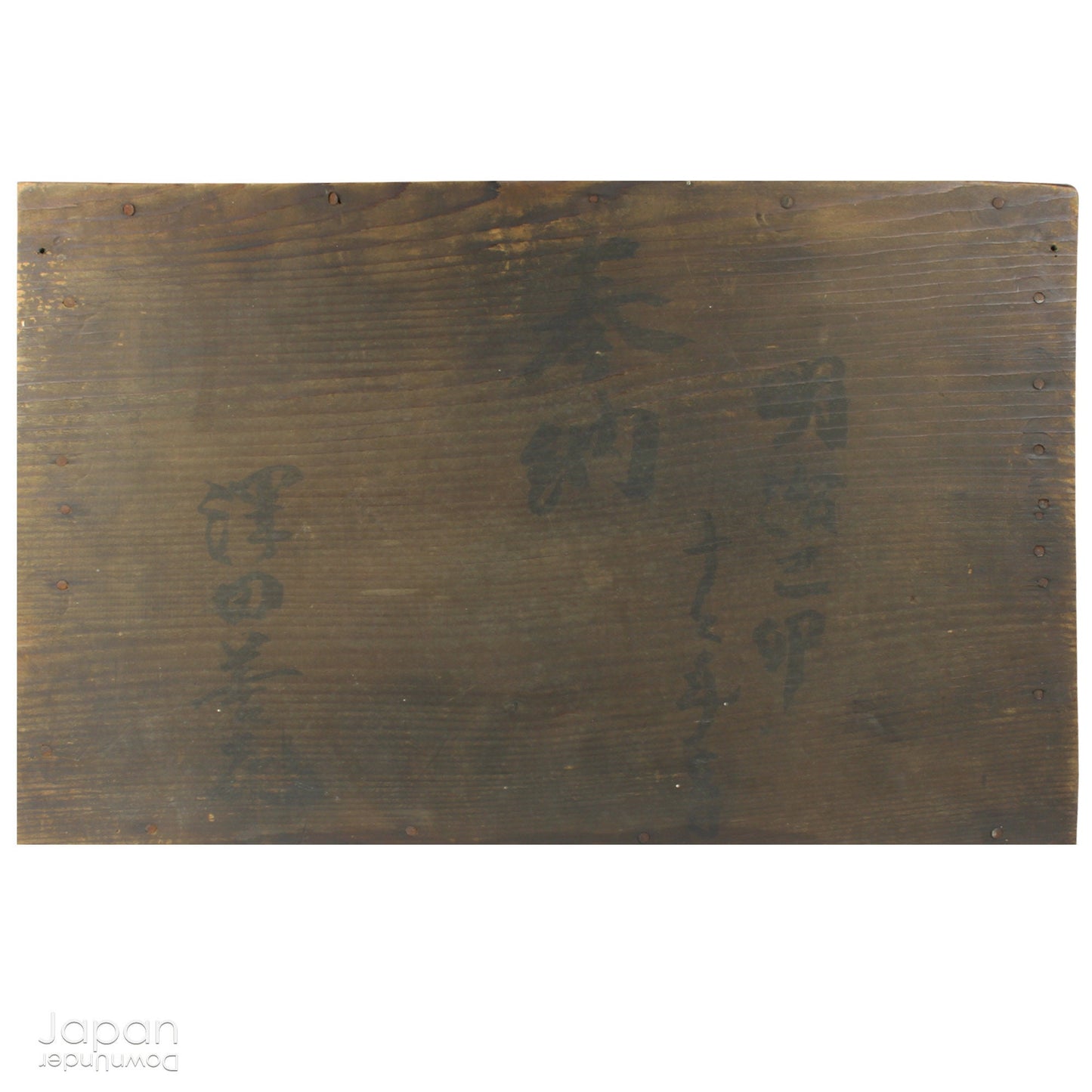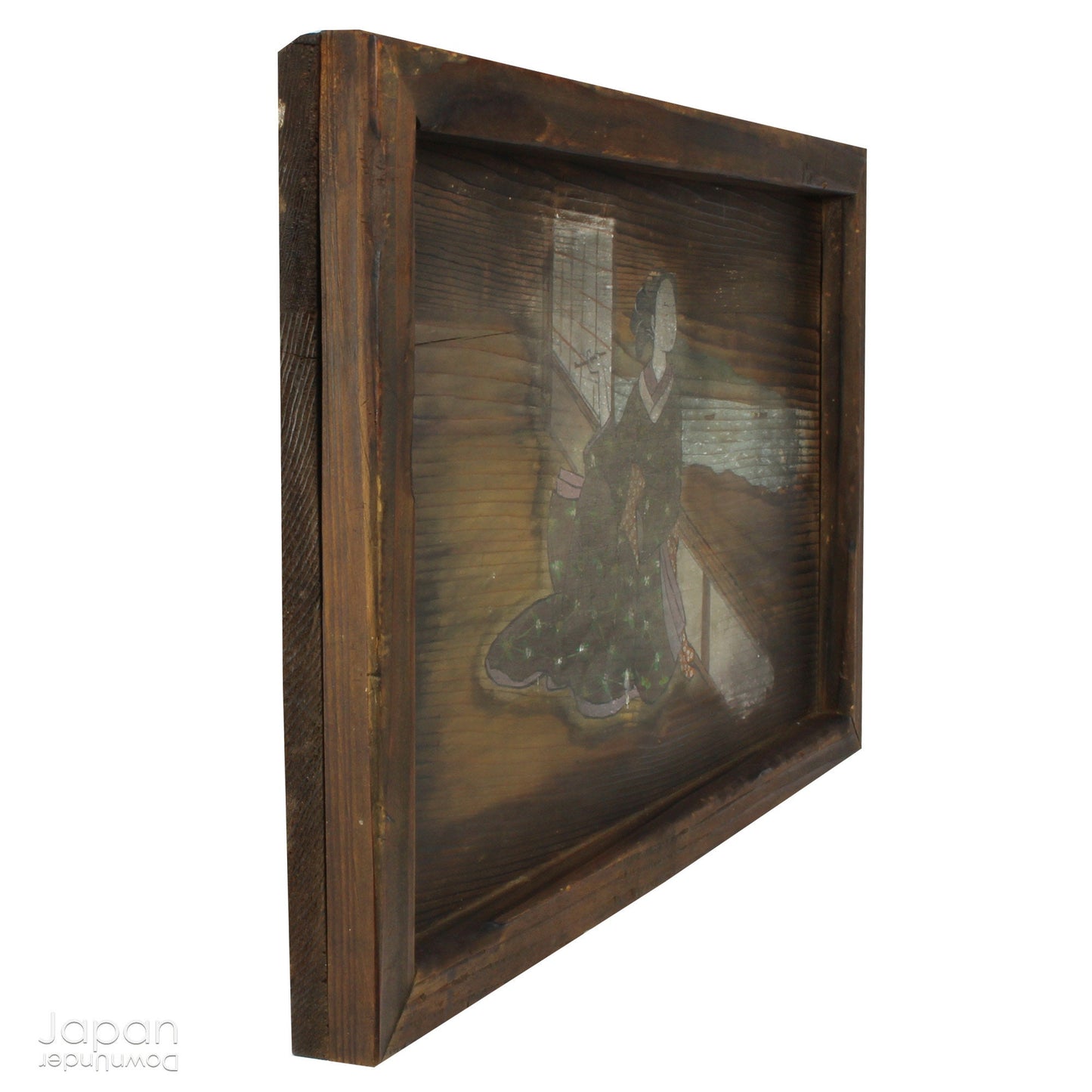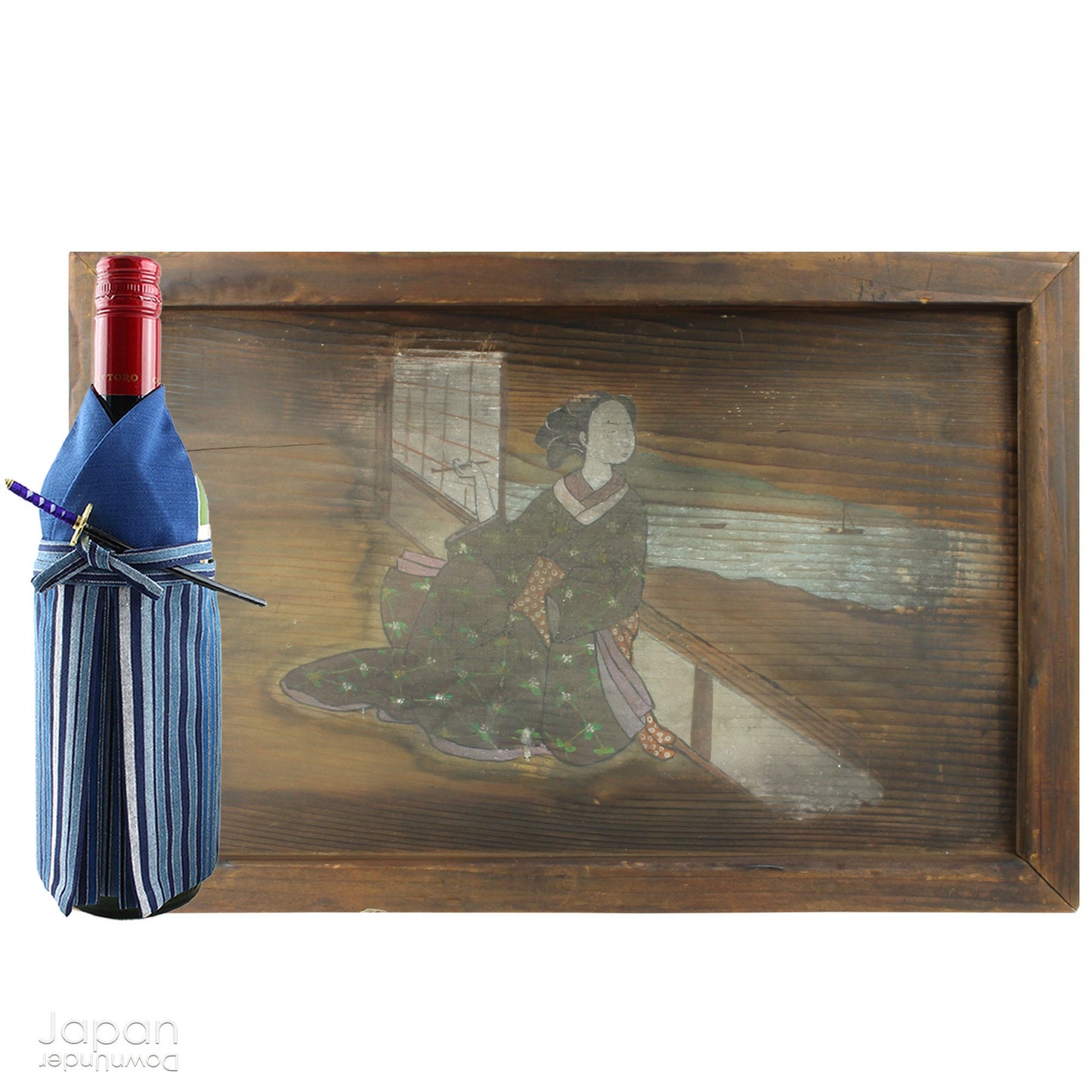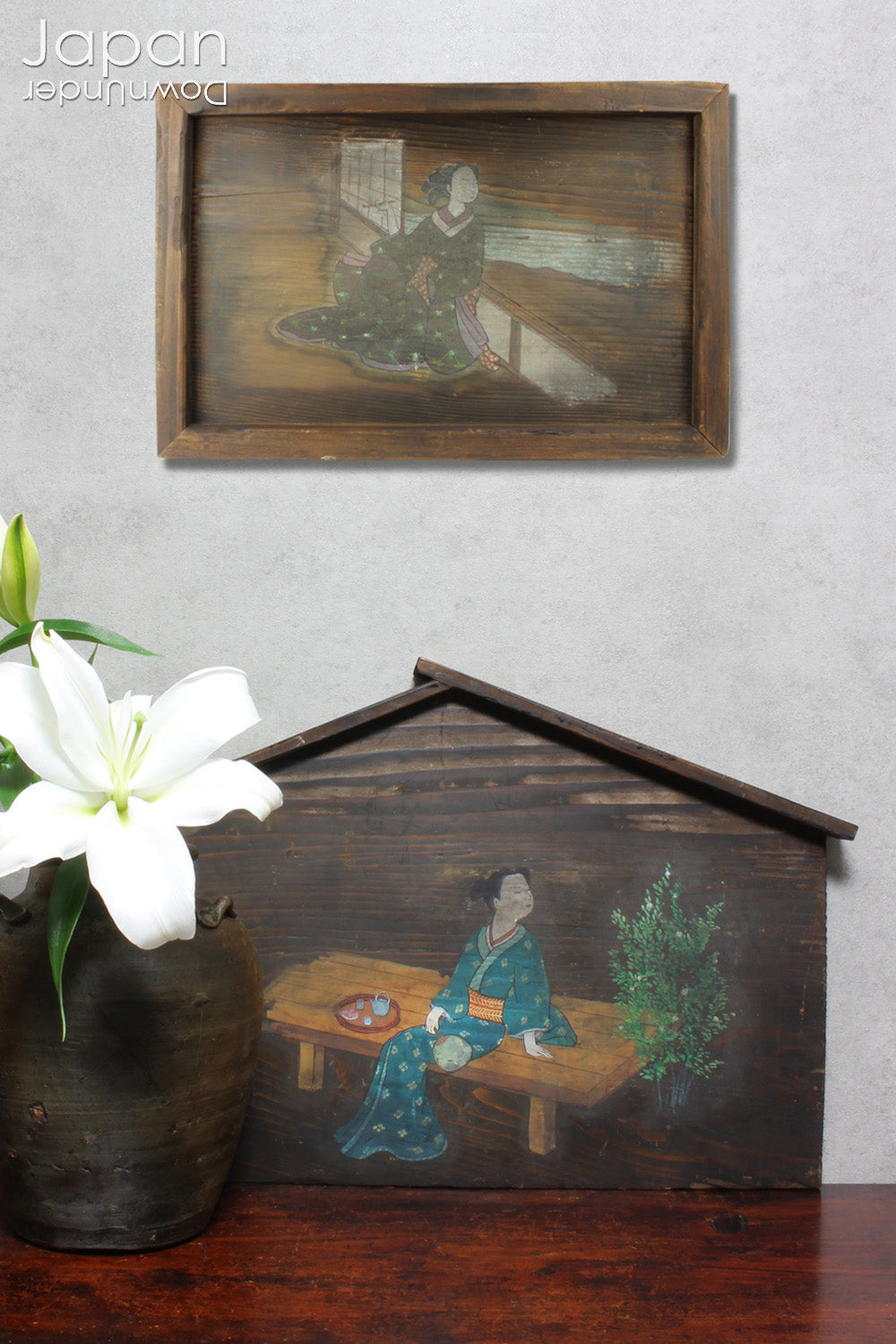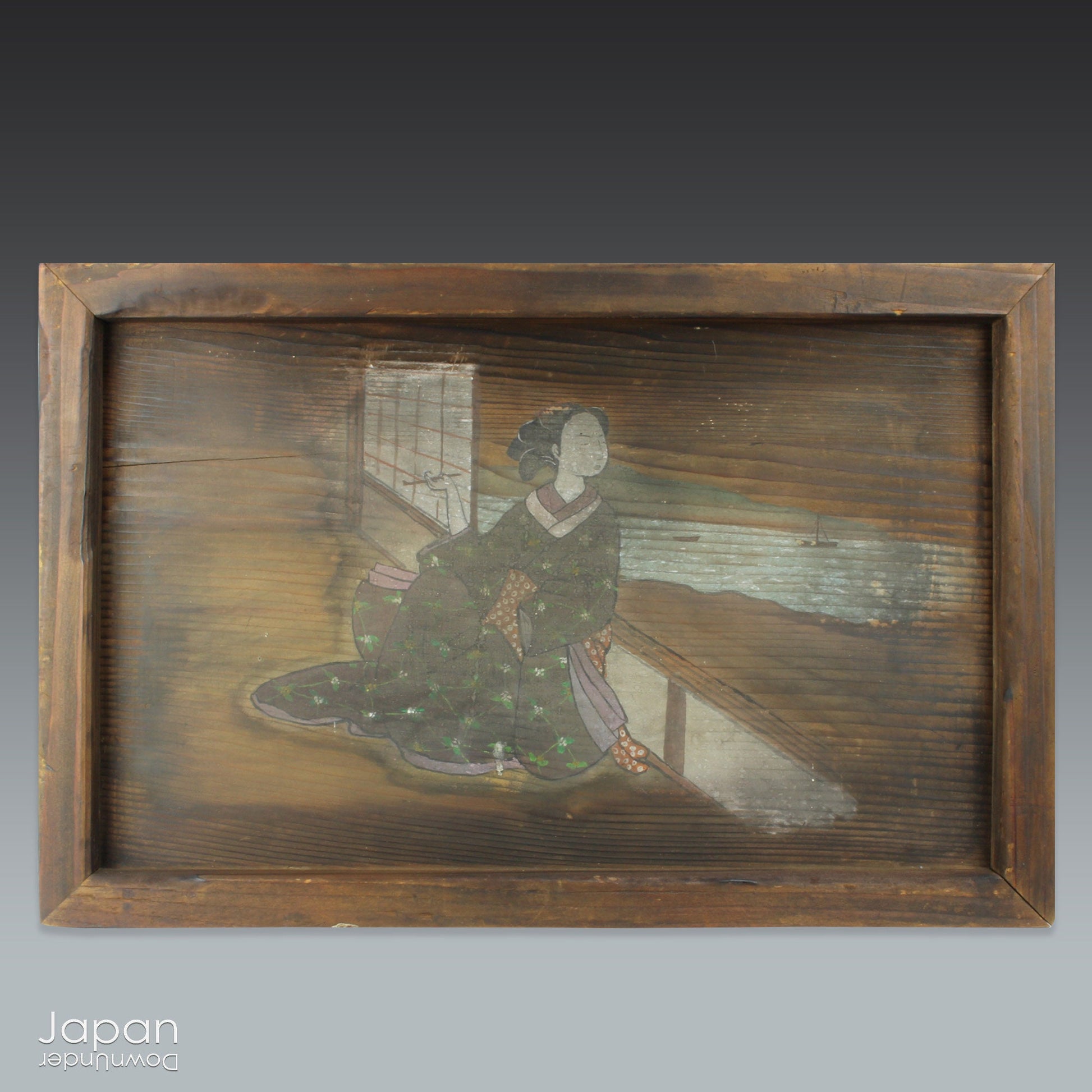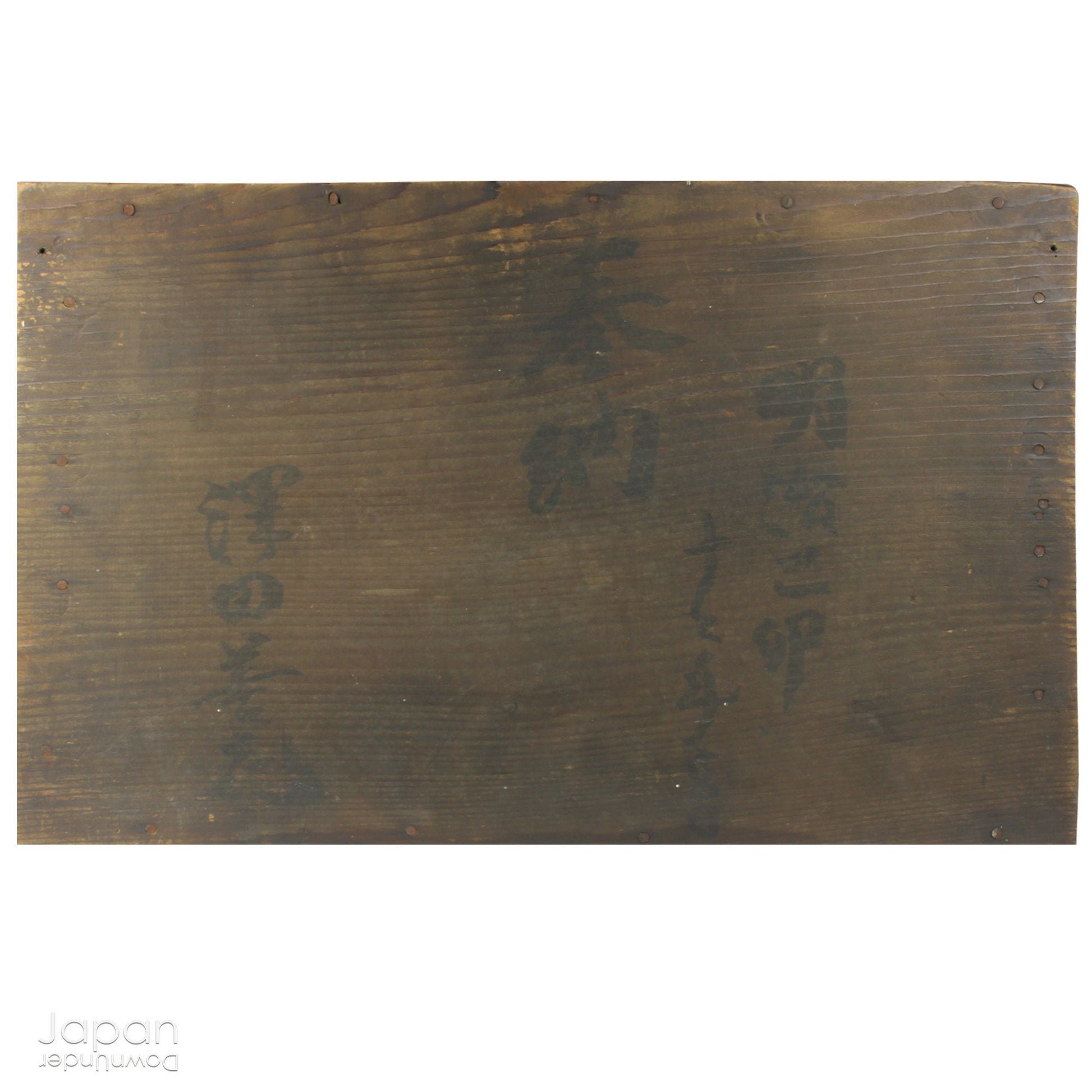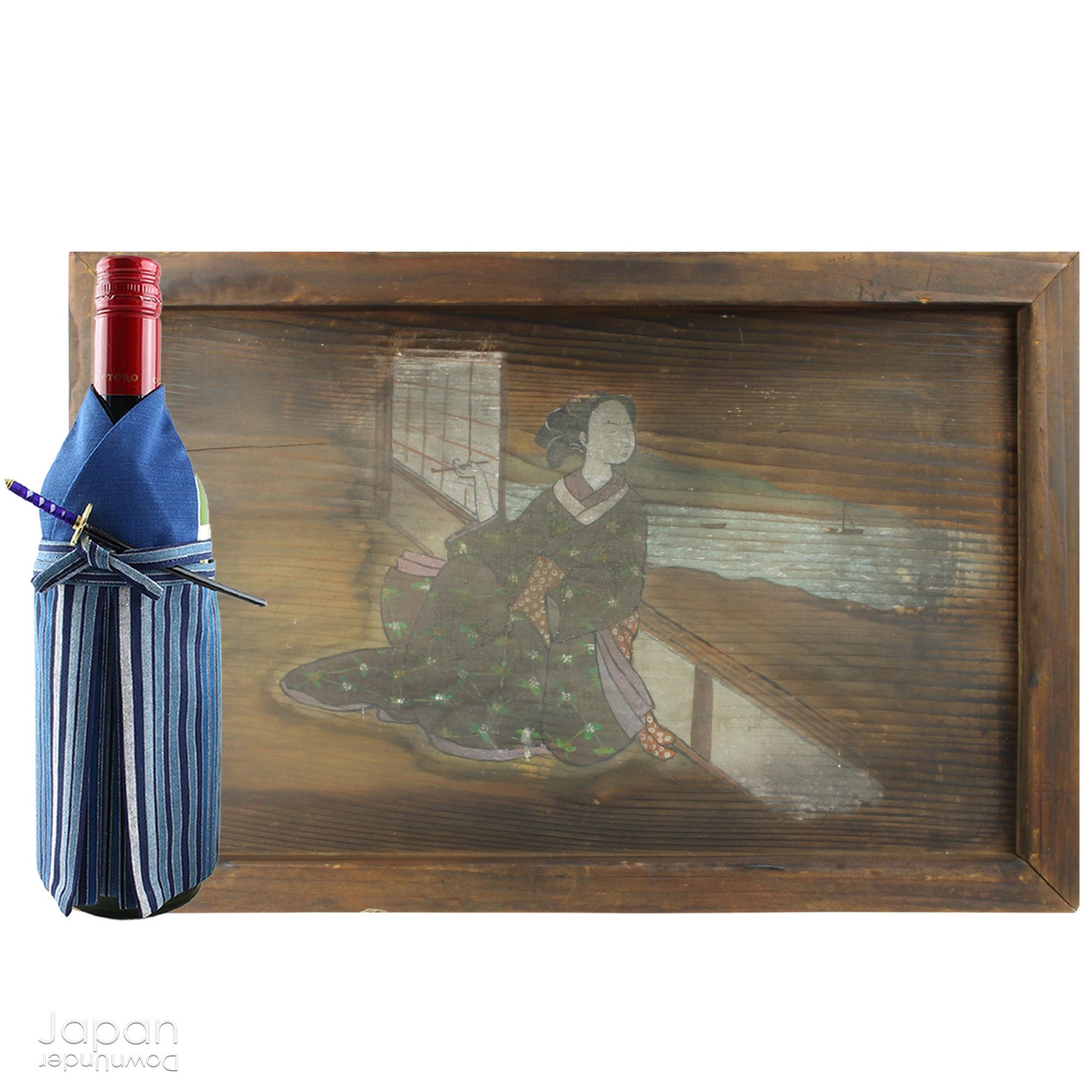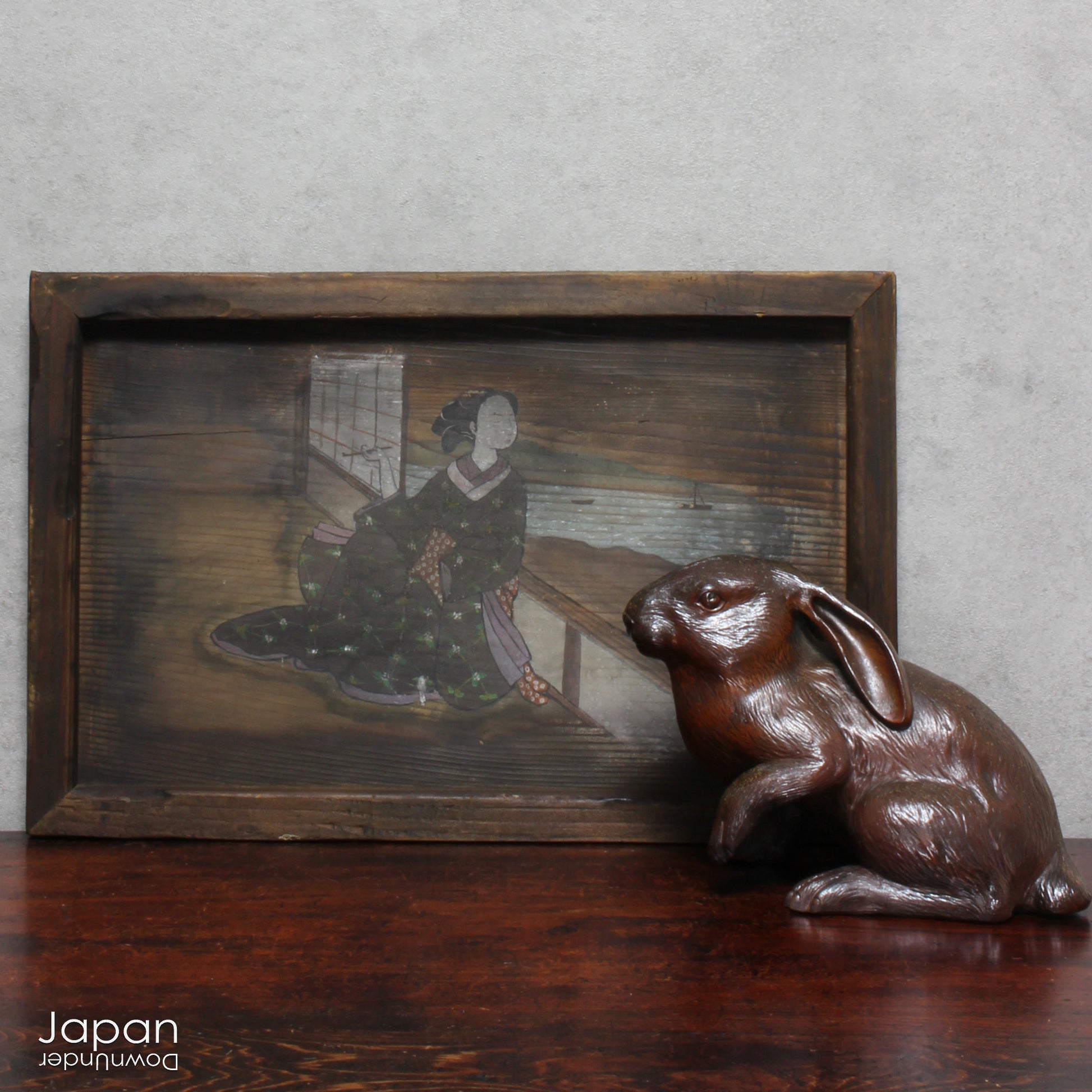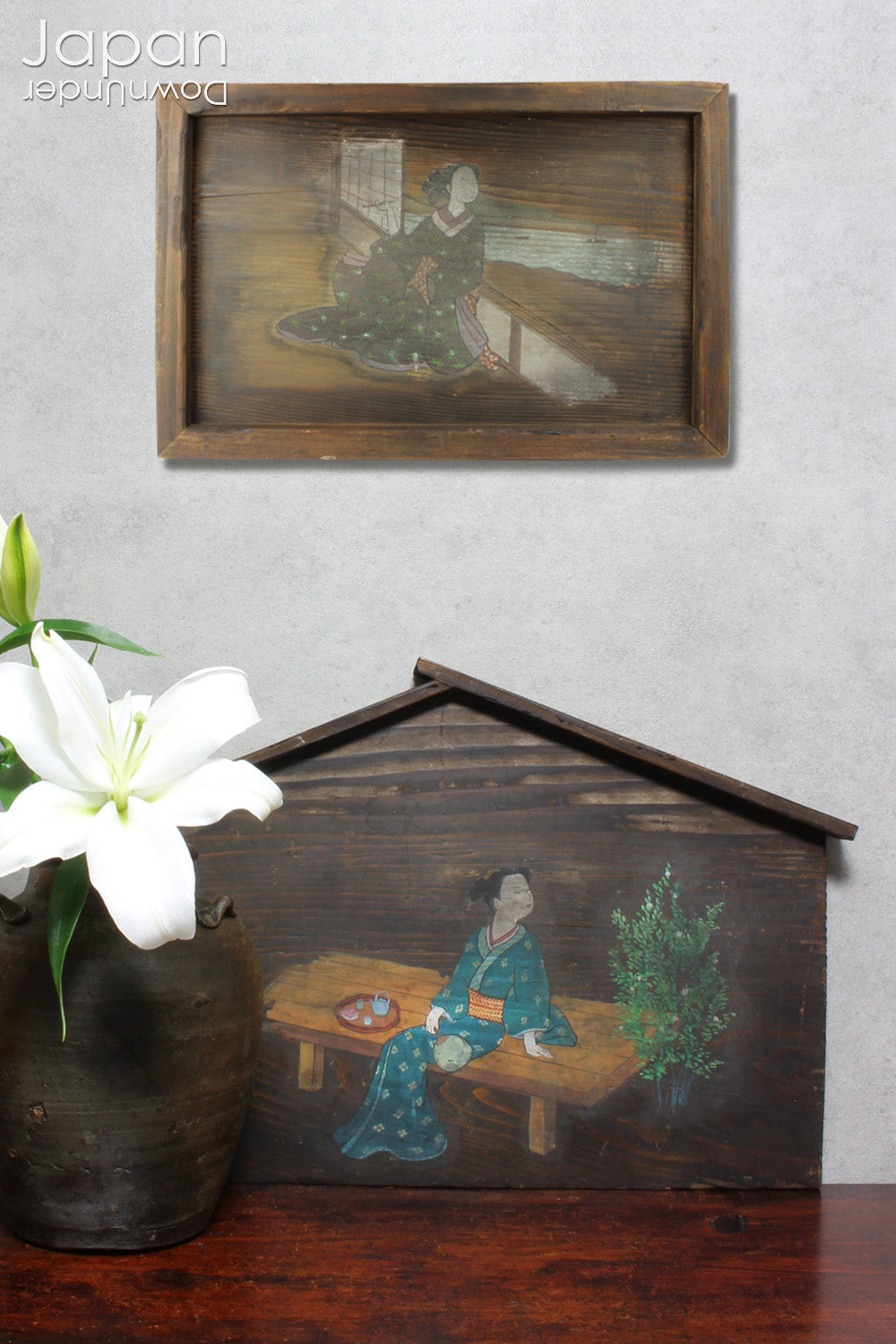My Store
large japanese antique votive plaque - beautiful woman in japanese kimono painting - religious wall art
large japanese antique votive plaque - beautiful woman in japanese kimono painting - religious wall art
Couldn't load pickup availability
Love Japanese Style Like We Do
A captivating 19th-century Japanese folk art painting, this rare and enchanting piece features a serene bijinga portrait of a kimono-clad woman, delicately rendered on an oversized ema - a traditional wooden votive plaque. Originally offered to a Shinto shrine, this ema beautifully blends spiritual tradition with artistic expression, offering collectors and admirers a unique glimpse into the elegance and cultural richness of the Meiji era.
Large ema such as this emerged during the late Edo to early Meiji periods, functioning less as spiritual tools and more as public art. Unlike the smaller votive plaques left for divine favor, these grand examples were displayed in ema halls - sacred spaces that later evolved into early forms of art galleries.
This particular ema showcases a graceful woman seated in the engawa, the wooden verandah of a traditional Japanese home. She gazes thoughtfully beyond the partially opened shoji (paper screen windows) toward boats sailing on a calm sea, leisurely smoking a traditional Japanese pipe (kiseru). The tranquil scene, painted in mineral pigments, captures not only beauty but also a timeless atmosphere of quiet contemplation.
Executed in the bijinga style - depictions of feminine beauty, etiquette, and daily life - this painting reflects a genre that gained prominence and definition during this very era. The artwork is painted directly onto a wide, rectangular wooden plaque with its original wooden frame.
On the reverse side, although partially worn, inscriptions read:
-「明治十三年」(Meiji 13) – the 13th year of Meiji (1880), marking the date of dedication.
-「奉納」(Hōnō) – meaning a ritual offering or dedication.
- The name of the individual who presented this ema to the shrine, preserved in faint characters.
Despite signs of age - gentle fading, surface wear, and minor abrasions - this large piece remains structurally sound and retains its striking visual presence. A rare and evocative example of antique Japanese folk art, it will add profound historical charm and aesthetic depth to any collection or interior.
- measures around 43 cm (17”) across x 28 cm (11”) tall x 3 cm (1.2”) deep.
- weighs 810 gm.
(listing for ema only)
SHIPPING INFORMATION
- please read our shipping policy.
- we use recycle packaging wherever possible and wrap for safety, rather than appearance!
ABOUT OUR VINTAGE, ANTIQUE AND OTHER ITEMS
We list pieces we feel are worthy of display. There may be scratches, dents, fading and signs of wear and tear. We try to explain the condition of each item exactly, but may miss something.
Information regarding the item and it’s age is obtained from dealers and our personal research. We do our best to give you the correct information but please be aware that we cannot guarantee this information.
Please message us prior to purchase with any questions you may have about our products.
EMA
These votive plaques date to the reign of the Emperor Suinin. It was this ancient leader that instituted the use of haniwa clay figures in lieu of live burials when tombs were built for the wealthy. The horses (shimme) that were previously placed in the grave then came to be gifts to shrines. They were thought to be horses for the gods to ride. It wasn't long before these ‘gift horses’ became more trouble than they were worth. The next logical step was making a replica of these horses and so the wooden ema votive plaque came into being. Ema, literally means picture horse.
The majority of ema were wood plaques, simply fashioned in the shape of a two dimensional gabled roof stable with a prancing steed or two inside. Gradually they came to be painted with animals of the zodiac, good luck images, deities, such as Kannon and Jizo and other specific icons depending on their intended purpose.
Prayers and wishes are written on the back of the ema and they are left hanging at the shrine, where the gods are believed to receive them. They are then ritually burned at special events, freeing the wish from the writer.
LARGE EMA
During the Edo and Meiji eras another type of very large ema evolved. Although these ema had the spiritual function of the small ema, they were also objects of display and advertisement. They were a kind of spiritual and social exchange that donors performed for both the gods and the viewing public.
Large ema, were generally commissioned by donors from professional artists, but small ema were painted by individual donors or by craftspeople who mass-produced ema for sale to shrine and temple visitors. Large scale ema, like their smaller version, were painted directly onto a wooden board. The larger ema were sometimes surrounded by a frame, or took the shape of the triangular horse stable-shaped roof of the small ema. Small ema were periodically burned but large ema were not removed from their display spaces.
The combination of increased size and more frequent donations of large ema spurred temples and shrines to create additional spaces for display called ema halls, or emado. These halls became an art gallery-like space within the religious complex where ema were on view to all visitors and ema became a publicly accessible art form. Notable ema and ema halls were even mentioned in travel books and other texts from the Edo era. Religious institutions did not actively curate their collection of ema and displays grew through unorganized additions initiated by the donor, leaving a permanent advertisement for the artist and the donor.
Large ema catch many of the defining characteristics of art in the Edo and Meiji period. They are religious objects as well as art objects. They provided donors, artists, and religious institutions with an opportunity to advertise devotion to God, miracles, and their own skills.
Share

